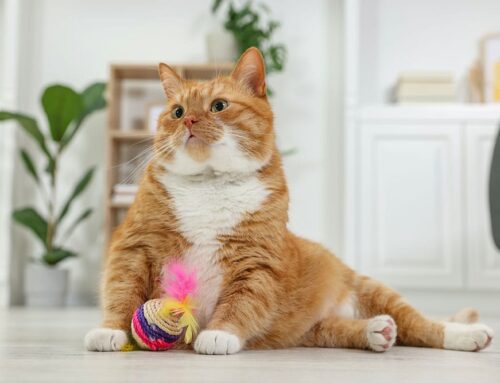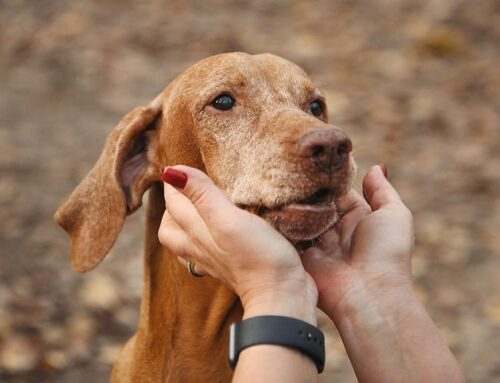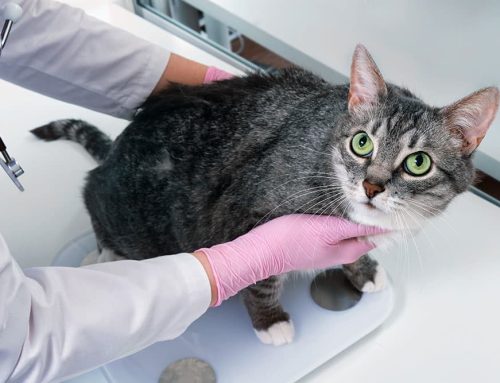As your pet ages, you may notice physical changes like their greying muzzle and slower gait, but their body is aging inside, too. Senior pets often experience cognitive decline, reduced vision and hearing, a slowed metabolism, decreased mobility, and increased health risks. Many of these changes are inevitable, but proper management can help ensure your pet enjoys their golden years in comfort. Humans adjust their lifestyles as they age, and pets can benefit from similar adjustments and accommodations that support their physical and mental wellbeing.
Our Mobile Cat & Dog Vet team treasures each senior pet’s wisdom and tenderness and we have made ensuring they receive compassionate, customized care our life’s work. If your pet has a few more grey whiskers or is walking more slowly, use our tips to support your companion in their next life phase.
#1: Know when your pet is considered a senior
Senior status varies in pets according to their size and breed. The American Association of Feline Practitioners (AAFP) Senior Care Guidelines classifies senior pets as the following:
- Cats are considered seniors at 11 to 14 years of age, and geriatric from 15 to 25 years of age.
- Dogs:
- Smaller dog breeds typically live longer than larger breeds, and may not be considered senior until they are 10 to 13 years of age.
- Medium- and large-breed dogs may gain senior status at 8 to 9 years of age.,
- Giant-breed dogs may be considered seniors as young as 5 years of age.
While age is only a number, you should have an idea of your pet’s average lifespan to ensure you are prepared to support their natural aging process.
#2: Schedule bi-annual senior pet wellness visits
Wellness care focuses on preventing disease and detecting health problems early, and these health examinations become more important as your pet enters their senior years. The American Animal Hospital Association (AAHA) recommends twice-yearly veterinary wellness visits for senior pets, because of their increased risk for age-related diseases, including:
- Cancer — Cancer is the most frequent cause of senior pets’ death, and can significantly decrease a pet’s QOL.
- Cataracts — Cataracts can develop gradually or quickly, and can affect your pet’s vision, including vision loss, which can cause some pets extreme fear and anxiety.
- Chronic kidney disease (CKD) — CKD inhibits the body’s ability to filter the blood’s biological waste, which can make pets feel ill and nauseated.
- Obesity — More than 50% of U.S. pets are overweight or obese, and the extra pounds can significantly affect their movement and breathing.
- Arthritis — Many senior pets have painful arthritic joints that decrease their mobility.
Your senior pet’s wellness exam will include a thorough physical examination and diagnostic testing, including a complete blood count, biochemistry profile, urinalysis, and thyroid assessment. Regular wellness care can prolong your senior pet’s health and vitality.
#3: Make your home more comfortable for your senior pet
Age-related conditions, such as arthritis or vision and hearing problems, can make everyday activities more difficult—and painful—for senior pets. You can make their life easier by adjusting your home environment, so they can navigate more easily. The following modifications will help:
- Surfaces — Slippery surfaces like tile, wood, and vinyl flooring can be a serious problem for pets with mobility issues. They need traction, so place carpet runners on your pet’s most traveled areas. To help your pet navigate outdoor spaces, try commercial grip aids that are applied to your pet’s paws or nails.
- Furniture — Navigating the home can be difficult for pets with vision loss or cognitive decline, so keep your furniture in the same place as much as possible to avoid confusion.
- Elevated places — If your senior pet’s mobility is limited, ramps will help them access their favorite resting places on the couch or a bed. In addition, a portable ramp can help your pet get in and out of your car.
- Bedding — An orthopedic pet bed is designed to gently mold to your pet’s body, relieve the pressure from joints, and provide spinal support. For optimal comfort, a bed warmer will soothe your pet’s aching joints.
#4: Keep your senior pet mentally and physically fit

Pet obesity is a significant problem in the United States, and your senior pet’s slower metabolism increases their obesity risk. Extra pounds can add stress on a pet’s joints and worsen their pain and mobility problems, so regulate your pet’s caloric intake and provide low-impact exercises, such as walking or swimming, to keep them fit and trim. Your pet’s mental health is equally important, and they need regular mental stimulation from learning new, simple tricks, eating from food or treat puzzles, and exploring new places.
If your senior pet’s quality of life is diminishing, contact our Mobile Cat & Dog Vet team. We can determine if their problem is age-related and the appropriate care can help, or if they are ready for hospice and palliative care.








Leave A Comment